Is stiffer always better? We tested the stiffness of different components and its effects on the trail
Most of you know how much your bike weighs. But how many of you can say how stiff it is? It’s no wonder, since stiffness is a much more subjective value. It’s heavily dependent on the component combination and has different effects in different scenarios. But is stiffer always better?

Modern enduro bikes are getting longer, slacker and… stiffer? The first two attributes will hardly come as a surprise, but the third is just as true. Carbon frames, carbon components, one-piece cockpits and forks with thicker stanchions don’t just change the geometry, but also the bike’s stiffness.
While the new wave of enduro forks with burly 38 mm stanchions certainly plays its part in making bikes increasingly stiff, it is carbon – which has become integral to modern enduro bikes – that makes the biggest difference. Most new frames are made from it and many components such as rims or handlebars are also constructed of carbon fibre. Above all, it’s the weight savings compared to aluminium that wins buyers over, which is why many high-end builds come equipped with more expensive carbon components. The components’ compliance usually isn’t considered, though it has – in contrast to the weight – a much greater influence on the handling.
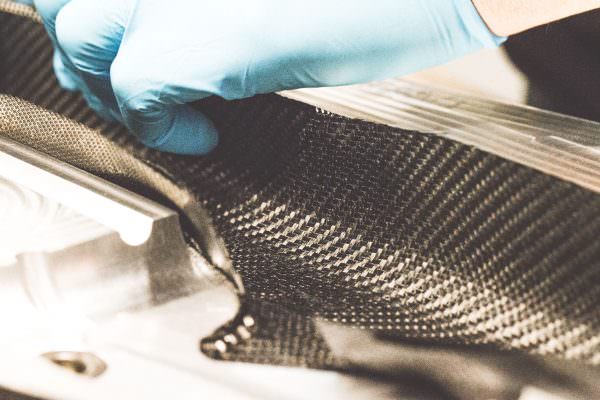

We’ve written a separate article summarising the theoretical aspects behind it as well as listing the respective pros and cons of carbon and aluminium components in terms of production and recycling. For the purposes of this article, however, we’re looking at the impact of stiffness on trail performance. What effects do stiffer or more compliant components have on cornering, jumping or slamming into roots and rocks? Are carbon components making bikes increasingly precise and is that always an advantage? Or do you just feel like you can’t hold on while your buddies with aluminium components leave you behind in a cloud of dust?
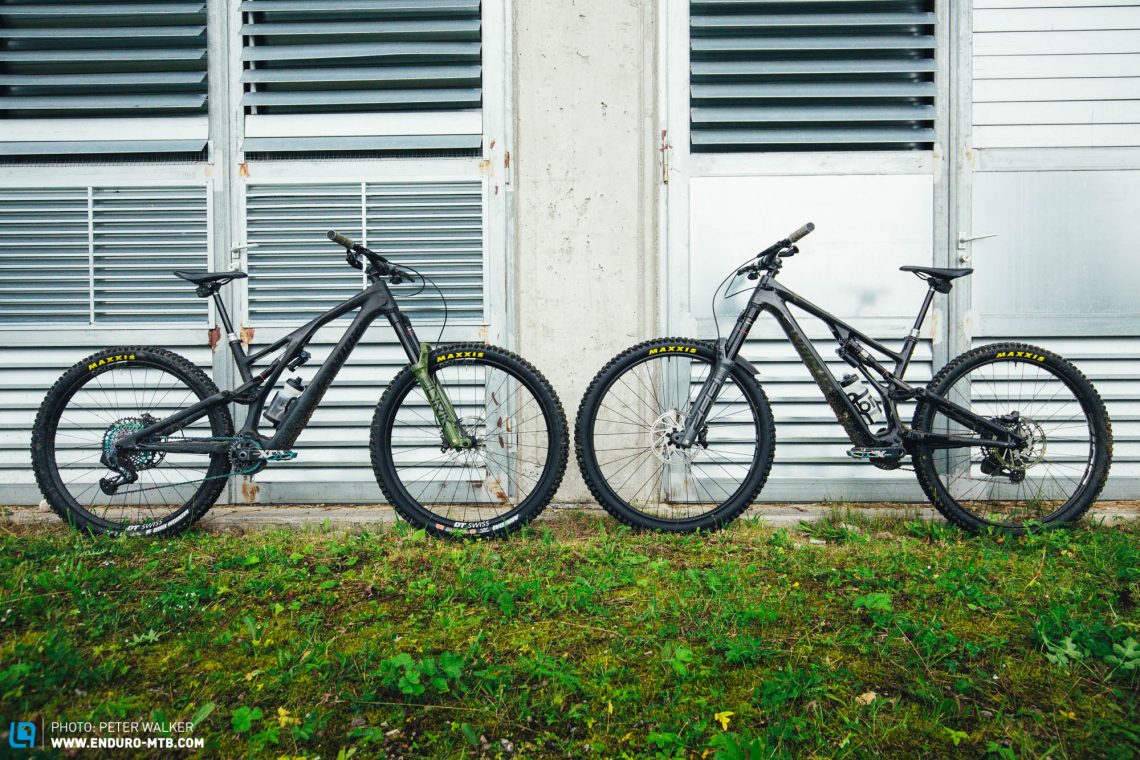
Same, same, but different: this is how we tested
For the purposes of our test, we built up two Specialized S-Works Stumpjumper EVOs to test different wheelsets, handlebars and forks. These are the components we tested.
Three different wheelsets:
- DT Swiss XMC 1200 SPLINE carbon
- DT Swiss EX 1700 SPLINE aluminium
- Zipp 3ZERO MOTO carbon
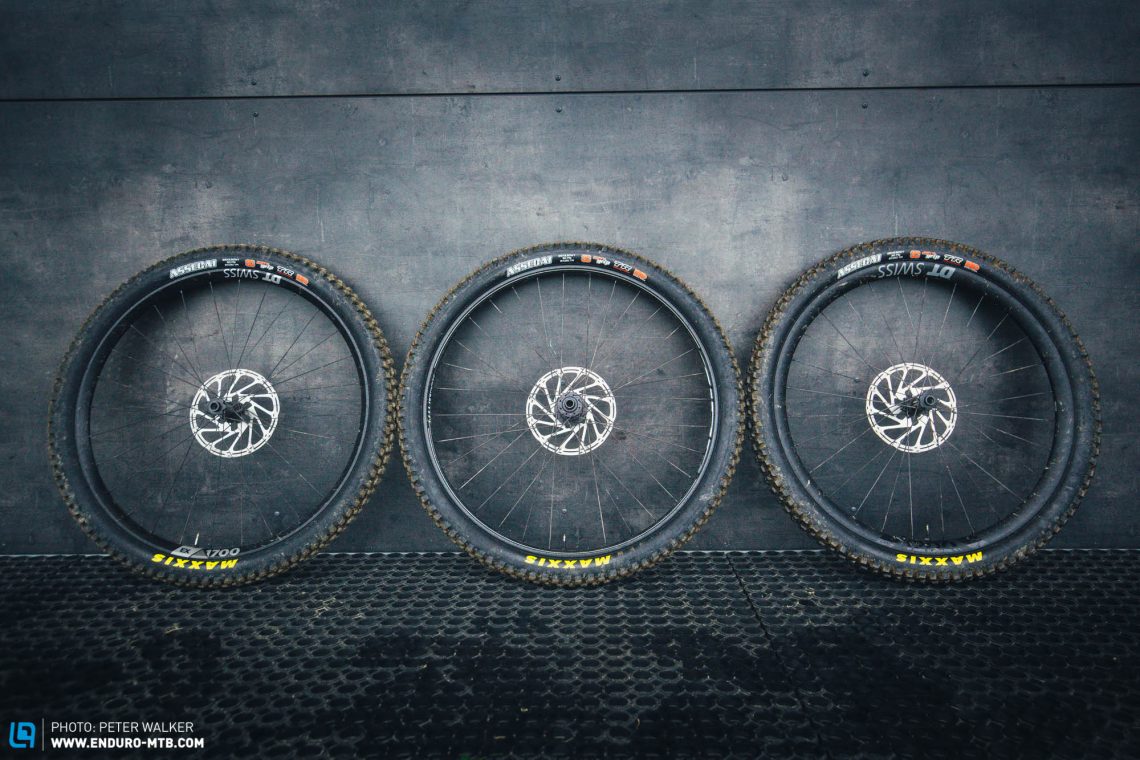
Two different forks:
- 160 mm travel RockShox ZEB Ultimate Charger 3.0 (38 mm stanchions)
- 160 mm travel RockShox Lyrik Ultimate Charger 3.0 (35 mm stanchions)
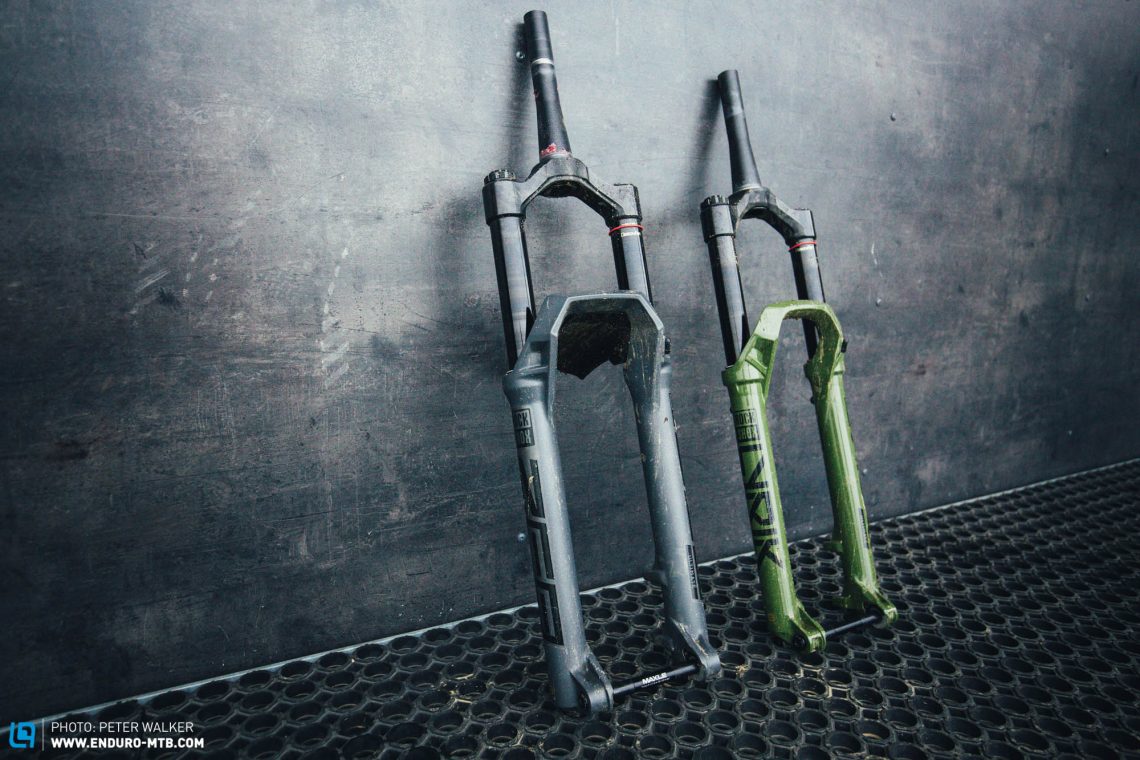
Two different handlebars::
- TRUVATIV DESCENDANT carbon at 800 mm wide (35 mm diameter)
- TRUVATIV DESCENDANT aluminium at 800 mm wide (35 mm diameter)
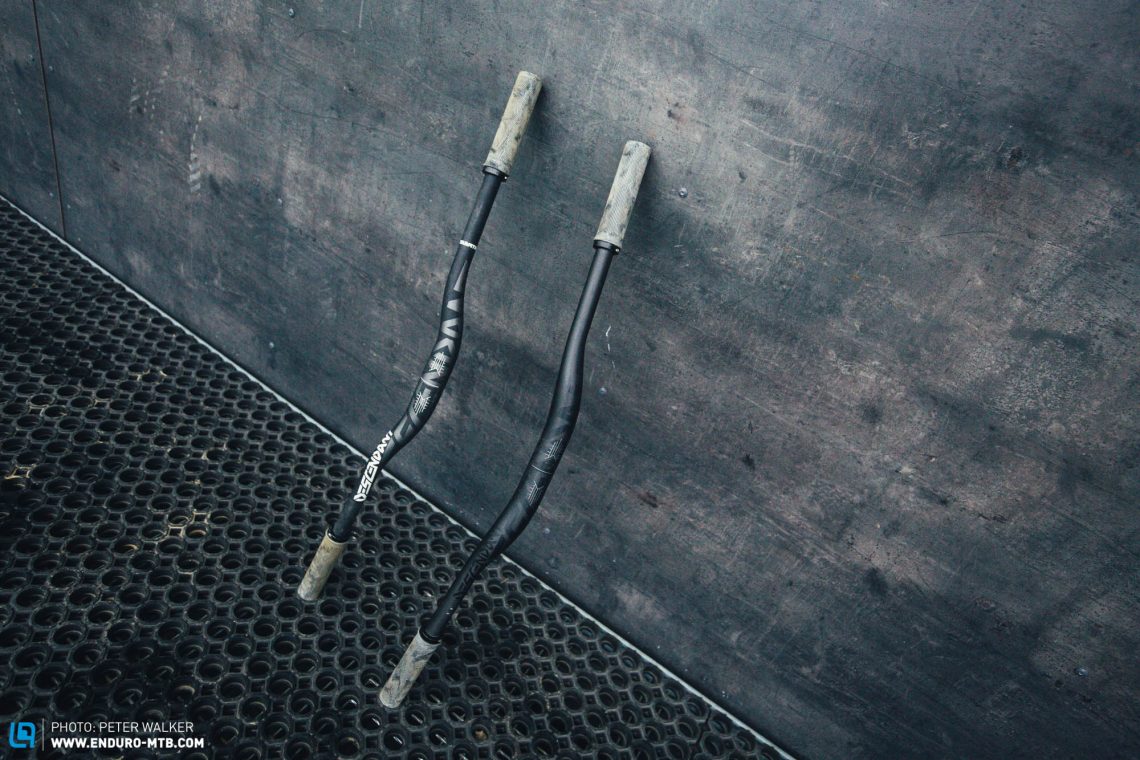
We made sure that all other components, such as the tires, grips, stems, shocks and drivetrains were set up identically, to eliminate all other variables as much as possible. With the suspension setup and tire pressures the same, we rode the bikes on a defined test track, swapping out forks, handlebars and wheels one by one.
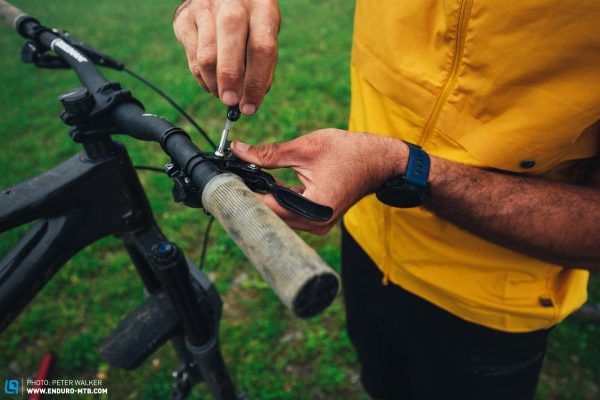
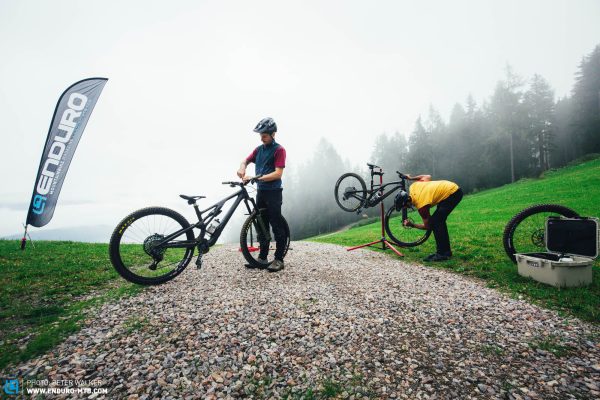
It’s all about the combination
The stiffness of the various components has different effects on the handling. Thus, it’s the combination of components that ultimately matters. Depending on how you combine stiff and compliant bits, you get more or less precision in different situations. This also affects the power transfer through berms or compressions and the feedback that gets passed on to the rider from the ground. Finally, it also has a big influence on rider fatigue, depending on the stiffness of the various components. So, there is no such thing as the perfect level of stiffness or compliance for every bike and rider. Each component contributes to the overall feel and has its own effect on the riding experience. For this reason, we list each part individually, giving you the respective advantages and disadvantages, as well as an analysis of which types of riders it’ll benefit.
Wheels: aluminium, carbon or something in between?
DT Swiss XMC 1200 SPLINE
Of the three wheelsets, the DT Swiss XMC 1200 carbon rims offer the highest level of precision as well as unmitigated feedback. They let you blast through berms and generate lots of speed by pumping the bike over rollers. As such, they’re a ton of fun on flow trails. On more technical routes, however, you’ve got to learn to cope with the direct feedback as lateral impacts are passed directly to the rider, demanding that you react immediately and with skill. If you’re slightly fatigued, you’ll have to slow down significantly or risk getting thrown off the bike. On fast, rough sections or on braking bumps, the XMC 1200 wheels can also be quite hard on the hands.
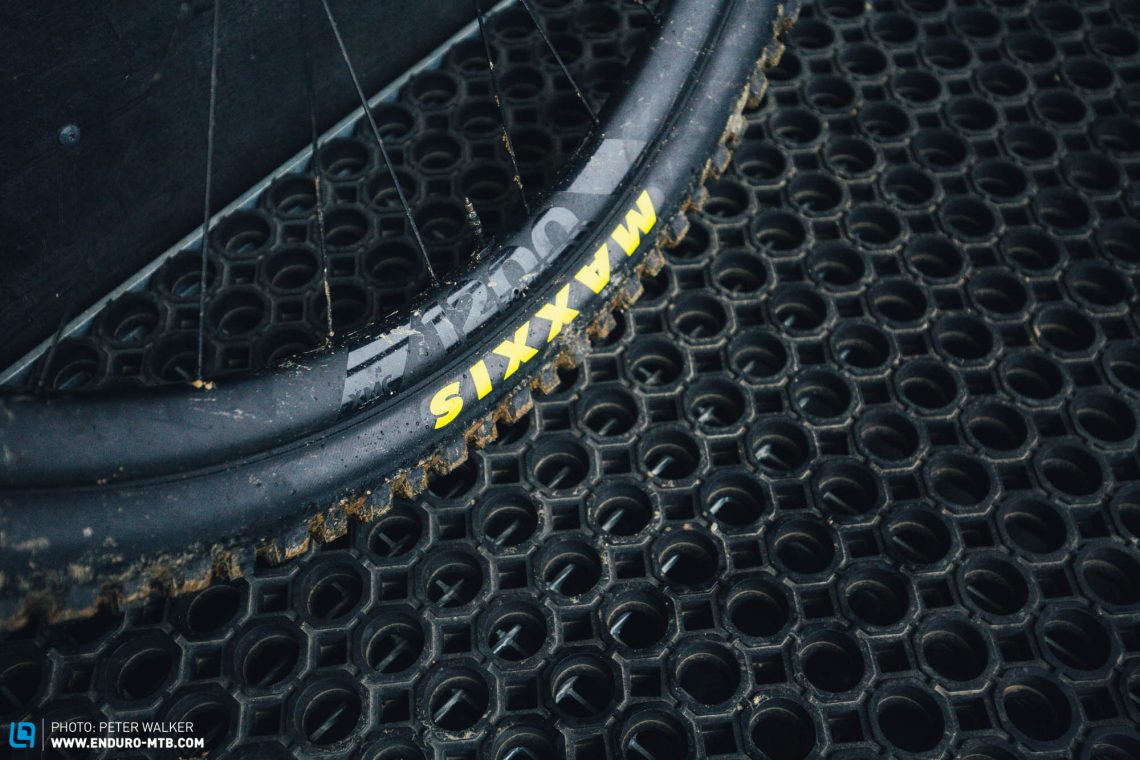
DT Swiss EX 1700 SPLINE
For the aluminium wheels, we tested a pair of DT Swiss EX 1700. They feel slightly more vague through the corners than their competitors and you can clearly feel how they flex through big compressions compared to the carbon option. Therefore, they’re somewhat lacking in precision and, compared to carbon rims, they absorb more of your energy when hitting berms or jumps. That said, they’re easier to control when things get rough since they don’t pass every hit onto the rider and the wheels are better at conforming to the terrain. This makes them less tiring to ride and you can still plough through rock gardens after a long day on the bike without having to worry about getting blindsided by lateral hits. Their lack of precision makes it more difficult to hit your chosen line, but it’s easier to hold it as the EX 1700 are more forgiving of small errors.
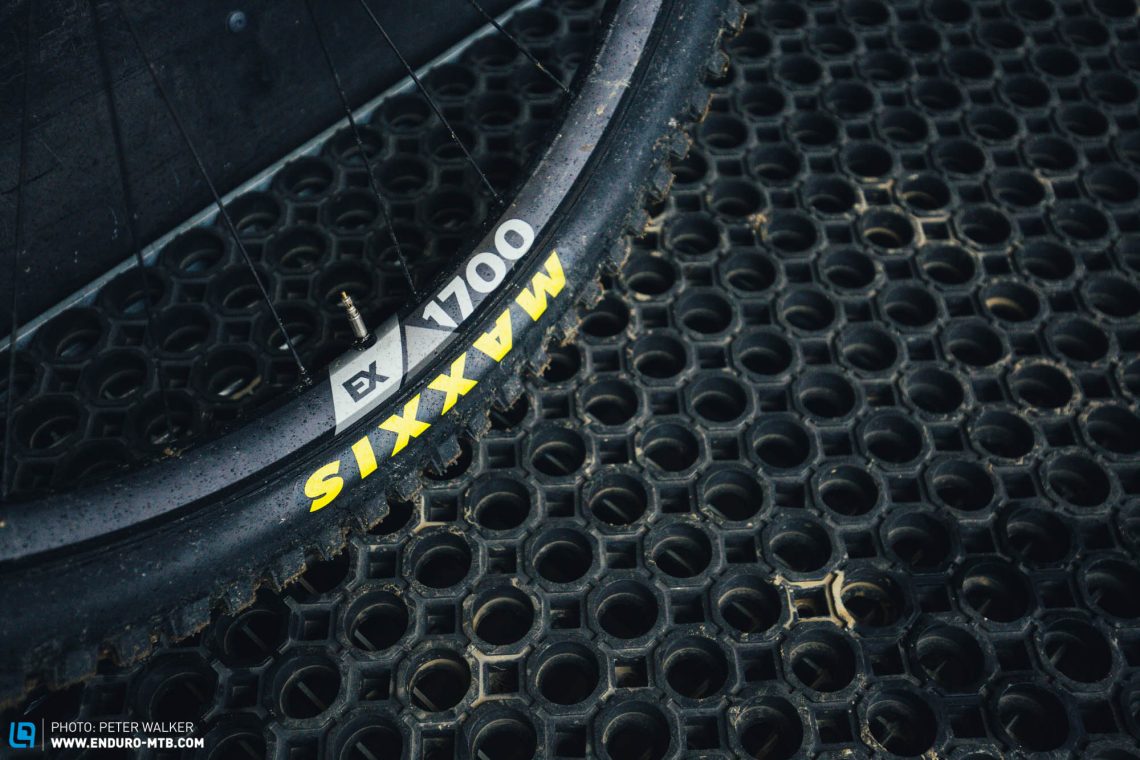
Zipp 3ZERO MOTO
Although the Zipp 3ZERO MOTO wheels are made of carbon, they’re designed to offer compliance. On the trail, they feel more like aluminium wheels. They’re almost as good at absorbing impacts as the aluminium DT Swiss EX 1700 wheels, making them comfortable even on rough trails or over braking bumps. This is a big help on long rides, because your arms don’t fatigue as quickly. Nevertheless, they are almost as precise as the DT Swiss XMC 1200. The Zipps fall somewhere in the middle – they give you a good level of precision, but aren’t overly harsh and unforgiving.
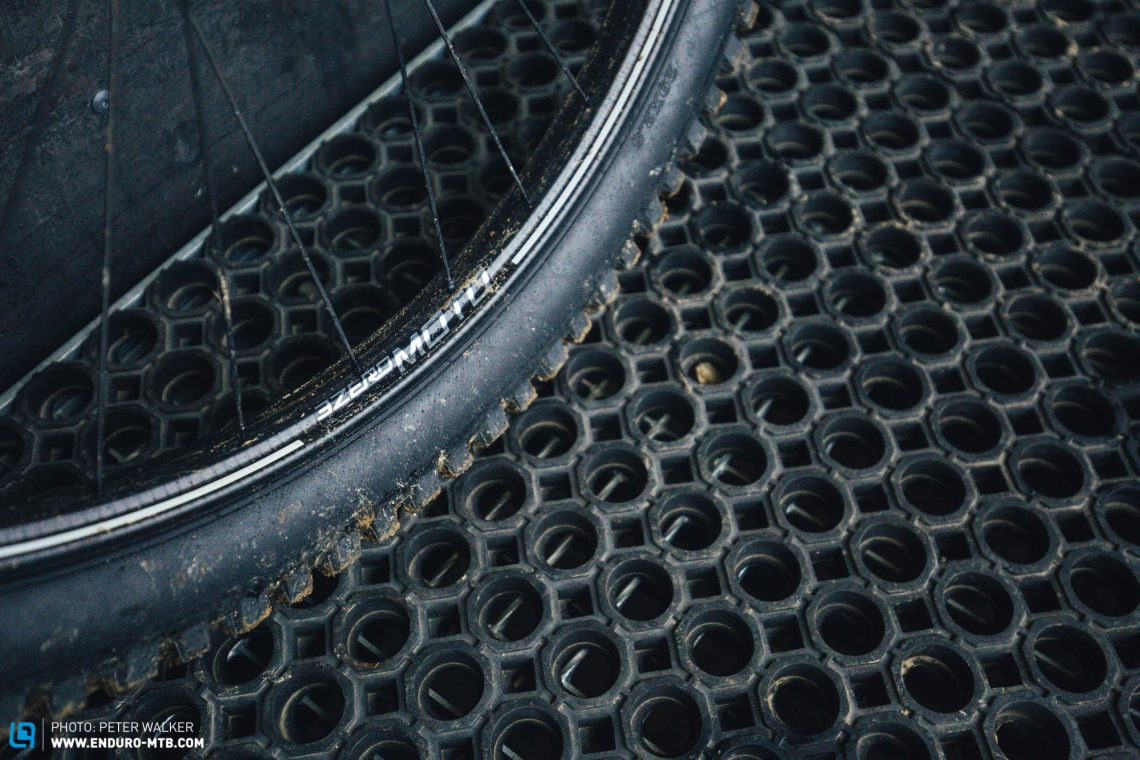
Handlebars: TRUVATIV DESCENDANT aluminium and carbon
You’ll find similar differences between aluminium and carbon handlebars as with the wheels. The carbon TRUVATIV DESCENDANT models feature a special carbon layup to reduce vibrations. Nevertheless, they offer less compliance and are noticeably more uncomfortable than their aluminium counterparts. However, the differences in precision are much smaller here than with the wheels. Thus, the carbon handlebar is best reserved for ambitious racers. The aluminium version offers significantly more bump absorption, thereby protecting your hands on bombed-out tracks. Hobby riders and all those who don’t have arms like Arnold Schwarzenegger at the 1969 Mr Universe pageant will benefit from the added compliance without having to compromise too much in terms of precision.
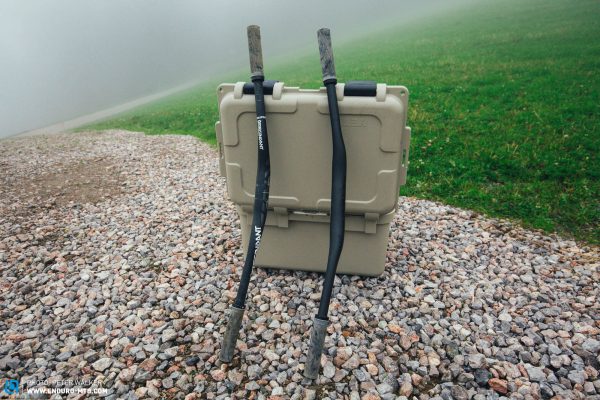

Fork: Same damping, different stanchion diameters
RockShox ZEB Ultimate Charger 3.0 160 mm
The RockShox ZEB Ultimate features beefy 38 mm stanchions, giving it different handling characteristics than the skinnier Lyrik. The air chamber is bigger due to the larger diameter and thus requires less pressure. It’s stiffer, too, though it’s mainly the torsional and lateral stiffness that’s higher; the difference in fore and aft stiffness is marginal. In moderate terrain, you can hardly feel any difference between the forks. However, you can feel that the ZEB delivers more precision and control when hitting rough, blown out lines littered with holes and compressions. Straightliners who like tackling the most demanding trails will benefit from these features. However, the ZEB is more likely to get thrown off line than to yield to lateral impacts, which requires more input and precision from the rider. As such, its handling can be more challenging, especially if you’re a light rider. The ZEB also needs more input from the rider to stay on track when it’s wet and slippery.
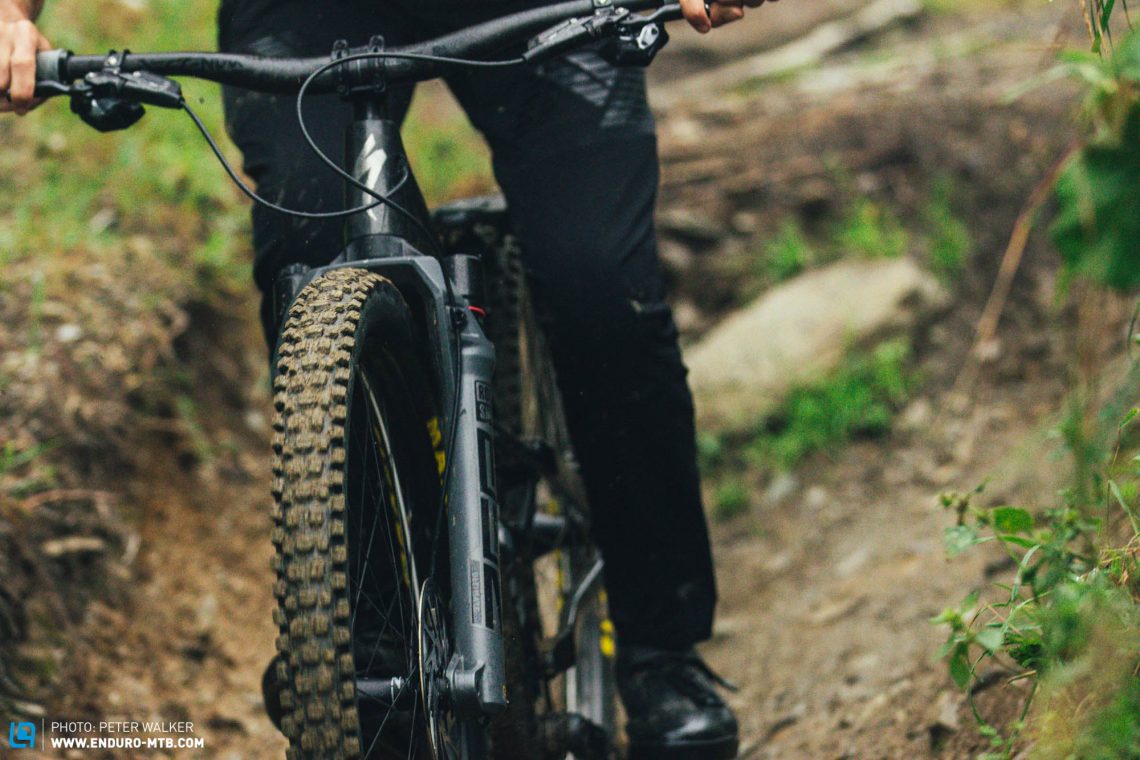
RockShox Lyrik Ultimate Charger 3.0 160 mm
The skinnier RockShox Lyrik Ultimate relies on 35 mm stanchions. Both forks feature the new Charger 3.0 damper, which means that the main differences between the two are due to stiffness. Due to the skinnier construction, the Lyrik is somewhat more flexible, which makes it easier to handle, especially for light riders. When hitting roots and rocks, it gives way to lateral impacts more easily and is therefore less easily unsettled. As such, you can be less attentive when you ride, because irregularities in the trail don’t all get passed onto the rider. That’s what makes the Lyrik’s handling easier and more forgiving even after a long day on the bike. On the flip side, heavier riders, in particular, will feel the fork twisting through big compressions or during fast, successive hits. On rough, high-speed sections, this comes at the cost of some precision.
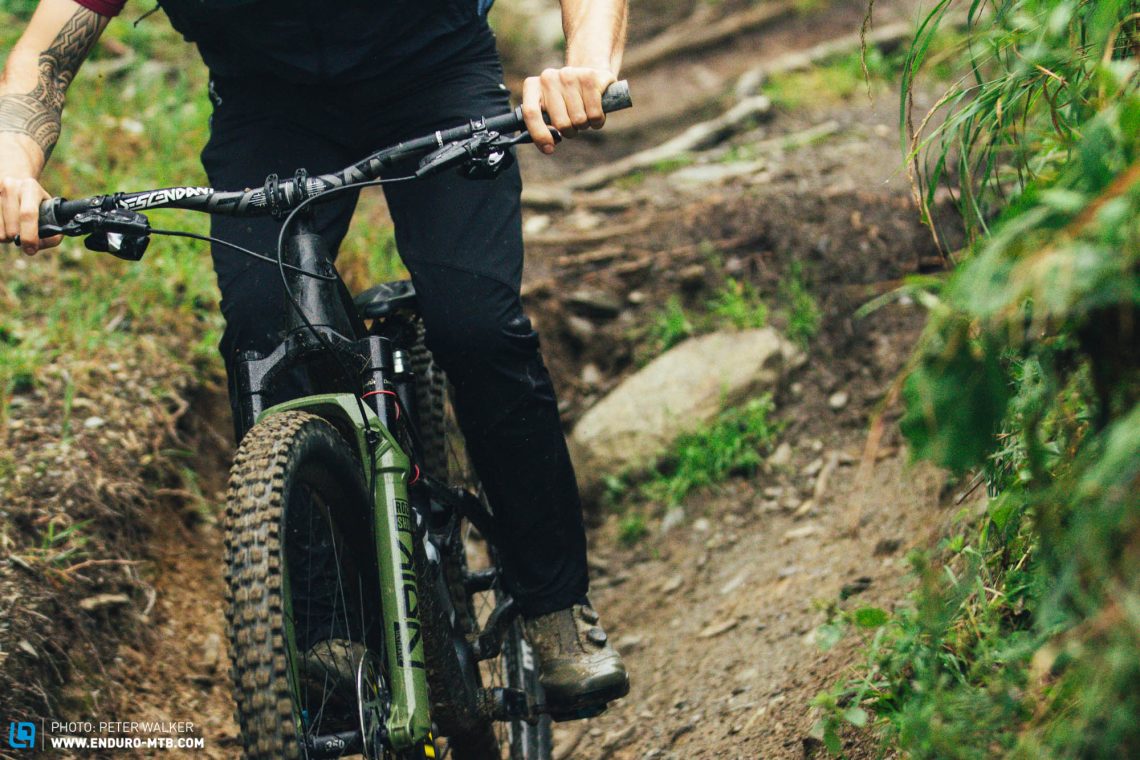
Findings and spec recommendations
Many of the characteristics that are usually associated with a lightweight bike – which often have many carbon components – aren’t the result of the bike’s total weight. Instead, they’re related to its stiffness. For example, agility, quick acceleration, precision, but also nervousness and becoming unsettled at high speeds can only be attributed to the weight to a limited extent. It’s much more the result of the individual components and the frame they’re attached to. So, it all comes down to having the right combination, because an overly stiff build makes just as little sense as a noodly one. In addition, the intended use, riding style and, above all, the rider’s weight have a big influence on the overall experience. Below, we’ve made a summary of the most useful combinations for different rider types. It is also worth noting that not all aluminium or carbon parts are made equal.

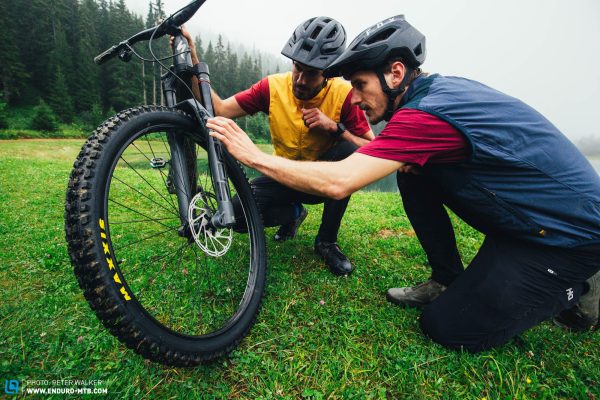
For comfort and fun on the trail
For hobby riders who are more concerned with having a good time than a fast time, the best bet is a combination of aluminium wheels, an aluminium handlebar and Lyrik fork. That way you won’t struggle as much with arm pump or sore hands even after a long day on the bike, and small mistakes get absorbed by the compliant components. However, this comes at the cost of precision and when actively pumping the bike through berms and rollers, and you won’t generate as much speed as with a stiffer combination.
For the fastest race times and flow trail enthusiasts
Anyone who loves to ride on flowy trails or is in a race against time and demands that all their input is transferred to the trail with maximum precision can benefit from carbon wheels, a carbon handlebars and ZEB fork. On rough terrain you’ll just need to bring the requisite skills and fitness to deal with the unmitigated feedback of stiff components. If you do, however, you’ll benefit from precise handling and minimal loss of momentum due to twisting components when railing berms or slamming through compressions.



For (bike park) shredders and heavy hitters
Do you spend a lot of time in the bike park and regularly ding your rims? Or does your weight demand a little more from your components? In that case, what you need most is a reliable setup. For maximum reliability, we’d also recommend going with an aluminium handlebar and wheelset. This combination is more forgiving of the occasional error and, when shit hits the fan, aluminium rims can bend and dent without failing entirely, so can usually still ride home. Combined with the stiffer ZEB fork, this setup still offers sufficient stiffness and precision.
All-round setup for ambitious riders
If you’re looking for a setup that can do it all, offers high precision and still provides a decent level of compliance, you’ll be well advised to go with the Zipp 3ZERO MOTO wheels. They’re stiff enough to resist flexing through berms and compressions, yet they’re compliant enough to prevent the onset arm pump on epic, all-day rides. Riders under 85 kg are recommended to go with the Lyrik, while heavier riders can benefit from the stiffer ZEB. Together with a compliant aluminium handlebar, you’ve got a solid combination that serves ambitious hobby racers and trail shredders alike.
Stiffer doesn’t always mean better! And stiff doesn’t always equal stiff. Different combinations of more and less stiff components result in completely different handling characteristics, so you can tailor your bike to your preferences or riding style. Do you want a stiff, precise, but also demanding bike? Or do you prefer something that’s more forgiving, comfortable and compliant? Of course, you can also have something in between. The choice is yours!
